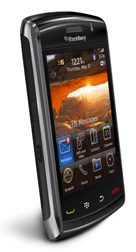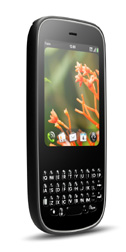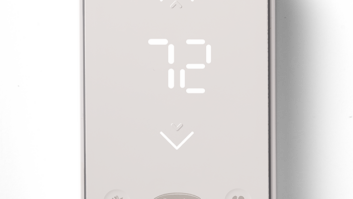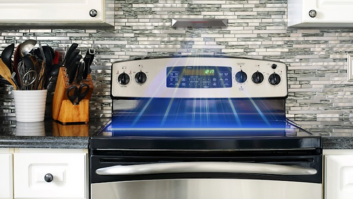New York – Verizon Wireless priced the BlackBerry Storm2 smartphone at $179.99,
and Sprint priced Palm’s Pixi at $99.99.
The Storm goes on
sale Oct. 28 through Verizon Wireless Communications stores, www.verizonwireless.com,
business sales channels, and indirect channels. Its $179.99 price is after a
$100 mail-in rebate with a new two-year contract on a voice plan that includes
email and Web access or with a BlackBerry email and Web plan. Data plans for
the smartphone begin at $29.99 when added to any Verizon Nationwide voice plan.
The rebate takes the form of a debit card.

The Storm2’s
BlackBerry OS 5 is also available as a free update to owners of the existing
Storm. The OS is available today from www.blackberry.com/update or www.verizonwireless.com/storm.
For its part, Sprint
announced Nov. 15 availability of Palm’s second smartphone based on Palm’s
WebOS. Its $99.99 price is
with two-year service agreement after $50 instant rebate and $100 mail-in
rebate. The price requires activation on a pricing plan that includes unlimited
data, including a plan that starts at $69.99. It will be available at Sprint
stores, online at www.sprint.com,
through telesales at 1-800-SPRINT1, and at Best Buy, RadioShack and select Walmart
stores.
The Storm2,Research
In Motion’s second-generation touchscreen phone, will offer a more responsive
touchscreen, more accurate typing on its virtual keyboard and other enhancements
compared with its predecessor, Verizon said. It will also get Wi-Fi 802.11 b/g,
which its predecessor lacked.

Like Verizon’s first Storm, launched
late last year at $199 but currently retailing for $49, the Storm2 operates in
3G EV-DO Rev. A mode in the Verizon network and in 3G HSDPA mode in 2.1GHz-band
networks overseas. Also like its predecessor, the Storm2 lacks a hard dialing
keypad or QWERTY keypad, and their overall dimensions are the same, as is the
3.25-inch display size. Both also feature GPS for location-based applications,
3.2-megapixel camera and 1,400 mAhr battery.
With a new electronic version of SurePress touchscreen technology
replacing a mechanical version, the new model responds quickly to gentle
presses, the company said. The new SurePress also accelerates typing by
allowing users to type one letter with one finger while another finger might
still be resting on another letter. The enhancement also enables multi-key
actions such as Shift- or Alt-key combinations.
The new model also adds BlackBerry OS 5, which delivers usability
and visual enhancements including inertial scrolling, enabling finger-flick
scrolling through contacts,
pictures and the like. The OS also provides spin boxes to make it easier
to set dates and times, gradient shading on buttons, more animation, sharper icons, brighter colors and
blacker blacks than provided by the BlackBerry OS 4.7, RIM said.
In another change, a
QWERTY-style keyboard will appear when the phone is held in portrait and
landscape orientation. The phones’ predecessor displayed a QWERTY keyboard in
landscape mode but, in portrait mode, it displayed a dialing keypad with
multiple letters per number.
In other changes,
the new model incorporates 2GB of embedded memory, up from 1GB, and a
microSD/SDHC slot with ability to support future 32GB cards, up from 16GB.
A proximity sensor blanks out the screen when a user is talking
on the phone to prevent accidental touchscreen clicks.
The Pixi, a smaller and lighter version of Palm’s Pre smartphone,
features a fixed QWERTY keyboard compared to the Pre’s slide-down QWERTY
keyboard, and lacks the Pre’s WiFi
802.11 b/g. Pixi’s 2.63-inch 320×400-pixel TFT display is smaller than
the Pre’s 3.1-inch 320×480
display. The 3.51-ounce, 2.17×4.37×0.43-inch Pixi also comes with a new Facebook application.
Both Palm devices feature CDMA 1x EV-DO Rev. A 3G cellular
technology, and both use Palm’s new WebOS, which features a multitouch motion
user interface, runs multiple live applications simultaneously, and stacks live
screens from multiple applications on top of one another like a deck of cards.
Consumers swipe a finger across the top card to “deal” it away, revealing the
card underneath. Users can also stack multiple live Web pages or multiple email
messages on top of one another.
Both Palm devices also feature Synergy, a feature that aggregates
contact lists, calendar items and email messages from multiple sources,
including Web-based sources. The contact list, for example, automatically
combines contacts lists from a user’s Outlook, Facebook, Google and other
contact lists.
Like the Pre, the Pixi features integrated GPS, Bluetooth 2.1 + EDR with stereo support, and 8GB
embedded memory. The resolution of the Pixi camera is 2 megapixels compared to
the Pre’s 3-megapixel camera.
The Pixi, however, adds removable rubberized back cover that can
be swapped with a series of artist-designed, limited-edition back covers for
personalization.
Other Pixi features include ability to link information on
Google, Facebook and Exchange ActiveSync into a single view. It also ties in
information from Yahoo! and LinkedIn. Users can get their Yahoo! contacts,
calendar and IM, and access their LinkedIn contacts, including job titles. Users can also start a conversation on AIM
Instant Messenger, Google Talk or Yahoo! Messenger and continue it by text
message later, with conversation appearing as a single thread.
The device can also sync with iTunes, and it supports
downloadable apps from the Palm Beta App Catalog. Support is included for SMS
and MMS messaging and IM messaging, including Google Talk, AIM and Yahoo!
For email, the Pixi supports Exchange ActiveSync for access to
corporate Microsoft Exchange servers as well as personal email support,
including Google push, Yahoo! push, POP3 and IMAP.
Also like the Pre, the Pixi features removable rechargeable
battery and a proximity sensor that automatically disables the touchscreen and
turns off the display when the phone is placed against the ear. A light sensor
dims the display in low-light conditions, and aAn accelerometer automatically
orients web pages and photos into portrait or landscape mode.
It comes with standard 3.5mm headset jack and LED flash.
Although the Pixi
comes with charger in the box, the smartphone is also compatible with the Palm
Pre’s Touchstone inductive charging dock, which lets users place the Pixi on
top of the dock without plugging it into the dock. Touchstone is available in
Sprint stores nationwide for $79.99 and includes a Touchstone charger and USB
wall charger. The Pixi Touchstone back cover, which enables inductance charging
is also available for $19.99 (plus taxes).
The Pre’s price was recently reduced to $149 from $199 with
two-year service agreement after $150 instant rebate and after $100 mail-in
rebate.













